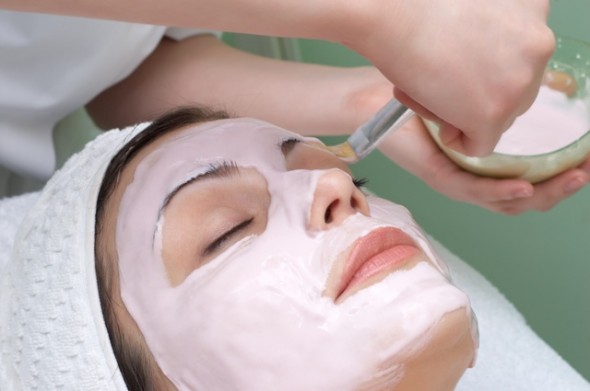 The skin is the body’s largest organ, weighing about 8 lbs (3.6kilos). It’s composed of a complex system of cell layers, nerves and glands that are designed to protect you.
The skin is the body’s largest organ, weighing about 8 lbs (3.6kilos). It’s composed of a complex system of cell layers, nerves and glands that are designed to protect you.
The skin acts as a waterproof, insulating shield, guarding the body against extremes of temperature, damaging sunlight, and harmful chemicals. It also exudes antibacterial substances that prevent infection and manufactures vitamin D for converting calcium into healthy bones. It is also a huge sensor packed with nerves for keeping the brain in touch with the outside world, and it allows us free movement.
Our skin is made up of three layers:
1. The outermost is called the Epidermis. This consists mainly of cells called Keratinocytes, made from the protein keratin (also the material in hair and nails). Keratinocytes form several layers that constantly grow outwards as the exterior cells die and flake off. It takes roughly five weeks for newly created cells to work their way to the surface. The epidermis harbours defensive Langerhans cells, which alert the body’s immune system to viruses and other infectious agents.
2. A deeper skin layer known as the Dermis gives the organs their strength and elasticity thanks to fibers of collagen and elastin. Blood vessels here help regulate body temperature by increasing blood flow to the skin to allow heat to escape, or by restricting the flow when it’s cold. A network of nerve fibers and receptors pick up feelings such as touch, temperature, and pain, relaying them to the brain.
The dermis houses hair follicles and glands with ducts that pass up through the skin. Sweat glands bring down internal temperature through perspiration while ridding the body of the waste fluids. Apocrine glands, which develop during puberty, produce a scented sweat linked to sexual attraction that can also cause body odor, especially around the armpits. Sebaceous glands secrete oil-like sebum for lubricating the hair and skin.
3. The skin’s base layer is the Subcutis, which includes a seam of fat laid down as a fuel reserve in case of food shortage. It also works as insulation and cushions us from knocks and falls.
Our skin color is due to Melanin, a pigment produced in the epidermis to protect us from the sun’s ultraviolet rays. Dark-skinned people produce more numerous and deeper-colored melanin particles. People with the darkest complexions are native to tropical regions, particularly those with few densely forested areas.
Fair skin is an adaptation found in people from northern latitudes where solar rays are relatively weak. Here the benefits of dark skin are outweighed by the need for bone-strengthening vitamin D, produced through exposure to UV rays. But hotter, sunnier environments bring the risk of serious skin damage.
YOUR SKIN: FACTS & FUNCTIONS
- Your skin protects you: it is an anatomical defense barrier from pathogens and damage between the internal and external environment. Langerhans cells in the skin are part of the adaptive immune system.
- It provides sensation: your skin contains a variety of nerve endings that jump to heat and cold, touch, pressure, vibration, and tissue injury.
- It regulates heat: increases perfusion and heatloss, while constricted vessels greatly reduce cutaneous blood flow and conserve heat.
- It controls evaporation: your skin provides a relatively dry and semi-impermeable barrier to fluid loss.
- It serves as storage and synthesis: acts as a storage center for lipids (fats) and water.
- It absorbs oxygen: oxygen, nitrogen and carbon dioxide can diffuse into the epidermis in small amounts; some animals use their skin as their sole respiration organ (in humans, the cells comprising the outermost 0.25-0.40 mm of the skin are “almost exclusively supplied by external oxygen).
- It is waterproof: your skin acts as a water resistant barrier so essential nutrients aren’t washed out of the body.
Your skin is under near constant assault from the outside world, through harmful elements such as cuts, infections, scrapes, water, light and dangerous chemicals. However, your skin is tougher than it looks, and has resources to respond to a lifetime’s worth of traumas.
Excessive sun exposure can damage the skin by darkening it too much (overproducing the brown pigment melanin, which limits protection), but the body needs sunlight to produce vitamin D. If you have dark or olive skin, you are genetically predisposed to deal better with sun exposure. While if you are fair skinned, you should limit your exposure. This doesn’t mean that you can’t get out in the sun. This doesn’t mean that you have to cover yourself head to toe in creams full of harmful artificial chemicals that play havoc with your skin’s natural protective resources. Simply, do not attempt to change your natural skin colour by spending hours lying in the sun, or by layering fake tans on!
Skin ageing is accelerated by overexposure to the sun, toxins in cigarettes, drinks and foods, as well as chemicals found in beauty products
Your toothpaste, shampoo, sunscreen, body lotion, body talc, makeup, hair dye, and your anti-aging cream may be causing you to age faster than you are supposed to by messing with your skin’s natural resources. Not only that, but these are among the personal care products the consumer has been led to believe are safe, but that are often contaminated with carcinogenic by-products.
Many commonly used products contain potentially harmful ingredients, which are made up of very small molecules that may penetrate the skin, enter the blood stream, and build up in the liver, kidneys, heart, lungs, and tissues. Most skin problems start with self contamination, preservatives, and fragrance.
The glossy images we’re fed by the media hide a dangerous secret: most of our toiletries, even the natural variety, are made from the same harsh chemicals used for industry.
We regularly assume that these products are not harmful because they believe that they are approved for safety by the Food and Drug Administration (FDA). But although the FDA classifies cosmetics (dividing them into 13 categories), it does not regulate them. An FDA document posted on the agency’s website explains that “a cosmetic manufacturer may use any ingredient or raw and market the final product without government approval.”
This is with exception of seven known toxins, such as hexachlorophene, mercury compounds, and chloroform. Should the FDA deem a product a danger to public health, it has the power to pull a cosmetic product from the shelves, but in many of these cases the FDA has failed to do so, while evidence mounts that some of the most common cosmetic ingredients may double as deadly carcinogens.
Examples of products with potential carcinogens are: Clairol “Nice and Easy” hair color, which release carcinogenic formaldehyde as well as Cocamide DEA (a substance which can be contaminated with carcinogenic nitrosamines or react to produce a nitrosamine during storage or use); Vidal Sassoon shampoo (which like the hair dye, contains Cocamide DEA); Cover Girl makeup contains TEA (which is also associated with carcinogenic nitrosamines); Crest toothpaste which contains titanium dioxide, saccharin, and FD&C Blue#1(known carcinogens).
If you want to be healthy and look young without damaging your body or your brain, the secret is in your fridge’s veggie drawer!
About Author: Anna Aparicio is regarded as Ireland’s top female NLP/Hypnosis Life Coach. A Self-esteem and Confidence Expert, she has helped hundreds of women all around the world feel empowered, super confident, and lead happier more succesful lives. With a unique blend of Neuro-linguistic Programming, cutting edge personal development tools, and a contagious sense of humour and zest for life, Anna is renowned for getting results fast. Now you can get her free report WHY YOU’LL NEVER GET WHAT YOU WANT UNLESS YOU DO THIS at http://www.delite.ie

Sylvia Browder is CEO of Specialty Home Services LLC, a Home Improvement Company; a Small Business Consultant at Browder Consulting Group, a startup consultancy firm to help women with startup assistance, marketing, website and graphic design work and other support services. In addition, she has co-authored several published books; publisher of ‘Sylvia Browder’s Blog for Women Entrepreneurs’ a lifestyle blog; and publisher of ShopSpendBlack.com Business Directory & Blog platform created to help consumers find black owned businesses in a searchable format. In her spare time, she enjoys spending time with her husband of 30 years; 5 adult children and 5 grandchildren; church; friends and motorcycle riding.
















